Sean Bienvenidos Amantes Del Mundo Japonés, A Una Nueva Publicación De Actualidad. Dicho Esto Póngase
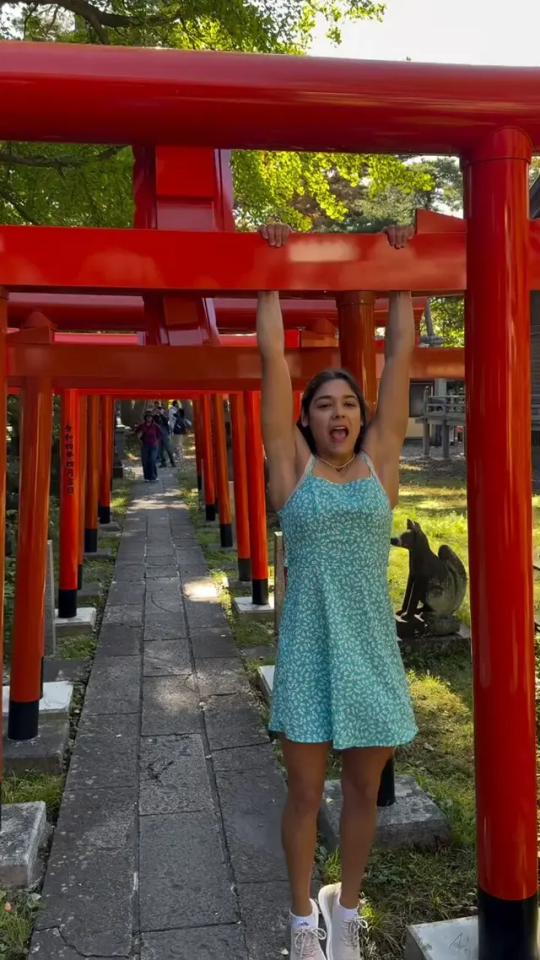



Sean bienvenidos amantes del mundo japonés, a una nueva publicación de actualidad. Dicho esto póngase cómodos que empezamos.
En esta ocasión, vuelvo otra vez a traer malas noticias sobre el país del sol naciente. Veo que la gente es muy burra y muy payasa por intentar ganar unos asquerosos likes de migrantes, comentarios, entre otras cosas, a través de la red social y dárselas de importante, de decir:Mira dónde he estado, mira lo que he hecho, solo con tal de llevar la atención y hacer el ridículo. Este tipo de gentuza no les importa, no les interesa la historia ni la cultura ni nada en absoluto, nada que tenga que ver con alguno de estos puntos mencionados anteriormente o algo similar; solo van a estos países, sobre todo al país desconocido o a países circundantes, porque están de moda y porque está en la sensación máxima ir para quedar bien y decir ante tus amigos o conocidos, Mirad dónde he ido y tú no. Por culpa de gentuza y de peña así, determinadas áreas del país del sol naciente están siendo vetadas para los turistas. Esto no quiere decir que los japoneses odien a los extranjeros y menos a los turistas; lo que odian son determinadas acciones o actitudes de dichos turistas, como subirse, por ejemplo, a la estatua de un perro icónico llamado Hachiko en frente de a estación de Shibuya.
-
O por ejemplo como el caso de la chilena inculta e inmadura por hacer el postureo en un lugar sagrado para los japoneses para mí es una calumnia y una blasfemia lo que ha hecho la chilena y además para mí es un insulto lo que los turistas están llegando a hacer en Japón convirtiéndolo en un parque de atracciones por favor parad ya de hacer el gilipollas o el imbécil en un país dejad que vaya gente que realmente valore y aprecie cultura, valores costumbres de un país. Temo postear esto en 2025; la raza humana da vergüenza.
-
Espero que os haya gustado y nos vemos en próximas publicaciones. Que pasen una buena semana.
-
日本世界を愛する皆さん、最新刊へようこそ。そうは言っても、安心して始めましょう。
-
この機会に、私は日出ずる国についての悪い知らせを伝えるために再び戻ってきました。ソーシャルネットワークを通じて、とりわけ移民から嫌な「いいね」やコメントを獲得しようとして、偉そうなふりをして、「私がどこにいたのか、私がどうなったのか見てください」と言う人々は、非常に愚かで非常にピエロであることがわかります。注目を集めて自分を馬鹿にするためだけにやったのです。このタイプの人々は、歴史や文化などにはまったく興味がなく、上で述べた点や同様のものとは何の関係もありません。彼らがこれらの国、特に未知の国や周辺国に行くのは、ファッショナブルだからであり、見栄えを良くして友人や知人に「ほら、私はどこに行ったのに、あなたはどこに行ったの?」と言うのが究極の感覚だからです。 t.このような暴徒や集団のせいで、日出ずる国の特定の地域は観光客の立ち入りが禁止されています。これは、日本人が外国人を嫌い、さらには観光客を嫌っているという意味ではありません。彼らが嫌うのは、例えば渋谷駅前にあるハチ公と呼ばれる象徴的な犬の像に登るなど、観光客の特定の行動や態度だ。
-
あるいは、例えば、日本人の神聖な場所でポーズをとった無学で未熟なチリ人女性の事件のように、私にとってチリ人女性の行為は中傷であり冒涜であり、また私にとって観光客の行為は侮辱である。日本で何をするか、遊園地に変えるか、その国で嫌な奴や馬鹿みたいな行動はやめて、その国の文化、価値観、習慣を本当に大切にして感謝している人たちを去らせてください。 2025 年にこれを投稿するのは怖いです。人類は恥ずべき存在だ。
-
気に入っていただければ幸いです。今後の投稿でお会いしましょう。良い一週間をお過ごしください。
-
Welcome, lovers of the Japanese world, to a new publication of current events. Having said that, make yourself comfortable, we're starting.
-
On this occasion, I am back again with bad news about the country of the rising sun. I see that people are very stupid and very clownish trying to gain some disgusting likes from migrants, comments, among other things, through the social network and acting like they are important, saying: Look where I've been, look what I've done, just to attract attention and make a fool of themselves. These types of scum don't care, they are not interested in history or culture or anything at all, nothing that has to do with any of these points mentioned above or anything similar; they only go to these countries, especially to the unknown country or surrounding countries, because they are fashionable and because it is the ultimate feeling to go there to look good and say to your friends or acquaintances, Look where I've been and you haven't. Because of scum and people like that, certain areas of the country of the rising sun are being banned for tourists. This doesn't mean that the Japanese hate foreigners and even less tourists; what they hate are certain actions or attitudes of said tourists, such as climbing, for example, the statue of an iconic dog called Hachiko in front of Shibuya station.
-
Or for example, like the case of the uneducated and immature Chilean woman for posing in a sacred place for the Japanese. For me, what the Chilean woman has done is slander and blasphemy, and for me, what tourists are doing in Japan by turning it into an amusement park is an insult. Please stop being an idiot or an imbecile in a country. Let people who really value and appreciate the culture, values, and customs of a country go there. I'm afraid to post this in 2025; the human race is shameful.
-
I hope you liked it and I'll see you in future posts. Have a good week.
More Posts from Noticiasarquelogicasjaponesas and Others




Sean bienvenidos a una nueva noticia de arqueología japonesa en esta ocasión nos trasladamos al periodo Kofun un periodo protohistórico que abarca los años 250-592 d.c, todos conocemos este periodo por los famosos túmulos funerarios en forma de herradura. - Se localiza en la prefectura de Fukuoka en la isla de Kyūshū que data de hace 1400 años de antigüedad, que dataría de finales de dicho periodo. Se encontró en la ciudad de Kurume y sus características son : Mide 12 metros de largo y unos 7 metros de ancho. El túmulo tiene una forma única de la cuenca del río Chikugo - ¿Qué personaje importante fue enterrado?¿Cómo se llamaba ?¿Se resolverá la incógnita?. Sí quieren saber más sobre este hallazgo arqueológico y otros más del país del sol naciente no duden en dejar un like y nos vemos en la próxima entrega un cordial saludo. _ 日本の新しい考古学ニュースへようこそ。今回は、西暦250年から592年にかけての原史時代である古墳時代に移ります。この時代は、有名な馬蹄形の古墳で知られています。 - 福岡県の九州にあり、その時代の終わりから1400年前にさかのぼります。 くるめ市で発見され、その特徴は次のとおりです。 長さ12メートル、幅約7メートルです。 筑後川流域の積雲は独特の形をしています - どんな重要な人が埋葬されましたか?彼の名前は何でしたか?未知のものは解決されますか? この考古学的発見や日が昇る国の人々についてもっと知りたい場合は、遠慮なく同じようなものを残して、心からの挨拶で次の記事でお会いしましょう。 - Welcome to a new Japanese archeology news, this time we move to the Kofun period, a protohistoric period that spans 250-592 AD, we all know this period for the famous horseshoe-shaped burial mounds. - It is located in the Fukuoka prefecture on the island of Kyūshū that dates back to 1400 years old, which would date from the end of that period. It was found in the city of Kurume and its characteristics are: It is 12 meters long and about 7 meters wide. The cumulus has a unique shape from the Chikugo river basin - What important person was buried? What was his name? Will the unknown be solved? If you want to know more about this archaeological find and others from the country of the rising sun, do not hesitate to leave a like and see you in the next installment with a cordial greeting. Fuente/ source/ソース: http://blog.livedoor.jp/ncc74210/archives/52869389.html



Sean bienvenidos japonsistasarqueológicos, a una nueva publicación en esta ocasión nos trasladamos a prefectura de Akita una vez más para hablar de la tumba de Ono no Komachi una vez dicho esto comenzamos. - Fue famosa como poeta, si no también tenía una belleza incomparable: ¡Fui a cubrir la tumba de Ono no Komachi en la ciudad de Osaki! ! La ciudad de Osaki, fue donde se refugió tras, ser expulsada del mismo, tuvo que regresar a Akita su ciudad natal. Después de eso, realizó una visita de 100 días para orar por la recuperación de su enfermedad, pero falleció el día en que se cumplió su deseo. Se dice que cuando los aldeanos la vieron, se apiadaron de ella y erigieron una lápida por su triste muerte. - ¿Quién fue Ono no Komachi? Fue una poetisa del periodo Heian, se desconocen cuando nació y murió, pero se la conoce como "Rokukasen", se baraja la posibilidad de que viviera en Kioto, además de la prefectura de Akita, como la prefectura de Kioto y la prefectura de Kumamoto, sobre dónde se dice que nació. - Espero que os haya gustado y nos vemos en próximas publicaciones, ¿Conocían esta historia y a la poetisa?. 今回も秋田県に場所を移し、小野小町の墓についてお話しします。 - 歌人として有名な小野小町だが、その美しさは比類ない。大崎市にある小野小町の墓を取材した!!大崎市から追放された彼女が避難した大崎市は、故郷の秋田に帰ることになった。その後、病気の回復を祈願して百日詣りをしたが、その願いが叶った日に亡くなった。その姿を見た村人たちが憐れみ、悲しい死を悼んで墓石を建てたという。 - 小野小町とは?平安時代の歌人で、いつ生まれ、いつ亡くなったかは不明だが、「六歌仙」の名で知られ、京都のほか、秋田県、京都府、熊本県などに住んでいたと考えられている。 - この物語と歌人をご存知でしたか? Welcome to a new publication, this time we move to Akita prefecture once again to talk about the tomb of Ono no Komachi, so let's begin. - She was famous as a poet, but she also had an incomparable beauty: I went to cover the tomb of Ono no Komachi in the city of Osaki! ! Osaki City, where she took refuge after being expelled from Osaki, had to return to Akita, her hometown. After that, she made a 100-day visit to pray for recovery from her illness, but died on the day her wish came true. It is said that when the villagers saw her, they took pity on her and erected a tombstone for her sad death. - Who was Ono no Komachi? She was a poetess of the Heian period, it is unknown when she was born and when she died, but she is known as "Rokukasen", and it is thought that she lived in Kyoto, as well as Akita Prefecture, Kyoto Prefecture and Kumamoto Prefecture, where she is said to have been born. - I hope you liked it and see you in future posts. Did you know this story and the poetess?




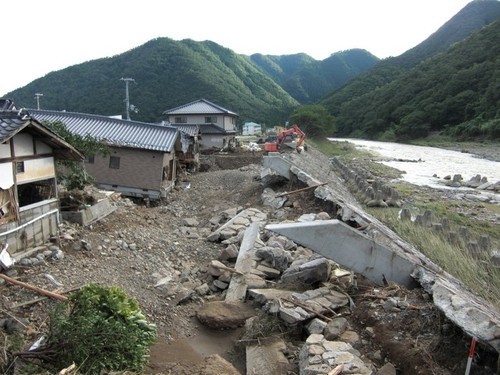
Sean bienvenidos, japonistasarqueológicos a una nueva entrega, en esta ocasión hablaré sobre actualidad nipona, una vez dicho esto pónganse cómodos que empezamos. — El domingo 16 de julio, azotaron fuertes lluvias al archipiélago nipón y hace no mucho el tifón Lan paralizó el tráfico aéreo de Japón y dejó miles de evacuados al oeste, además sin electricidad. Pero en este caso se han anegado muchas zonas del norte, causando efectos geográficos catastróficos y causando evacuaciones, etc. Por ejemplo: La ciudad de Akita registró precipitaciones, fue un récord, más de 250 milímetros durante un período de 48 horas, todo un hito histórico. — Espero que os guste y nos vemos en próximas publicaciones, que pasen una buena semana. - Welcome, Japanese archaeologists, to a new installment, this time I will be talking about Japanese current affairs, and once that is said, make yourselves comfortable and let's get started. - On Sunday 16th July, heavy rains hit the Japanese archipelago and not long ago Typhoon Lan paralysed Japan's air traffic and left thousands of evacuees in the west without electricity. But in this case many areas in the north have been flooded, causing catastrophic geographical effects and causing evacuations, etc. For example: The city of Akita recorded record rainfall of more than 250 millimetres over a 48-hour period, a historic milestone. - I hope you like it and see you in future posts, have a good week. - 日本の考古学者たちよ、新しい回へようこそ。今回は日本の時事問題についてお話しします。そう言ったら、くつろいで、始めましょう。 - 7月16日の日曜日、日本列島は大雨に見舞われ、少し前には台風12号が日本の空の便を麻痺させ、西日本では何千人もの避難者が停電に見舞われた。しかし今回は、北部の多くの地域が浸水し、地理的に壊滅的な影響を引き起こし、避難などを余儀なくされている。例えば:秋田市では、48時間に250ミリ以上の記録的な雨量を記録し、歴史的な出来事となった。 - お気に召していただけたなら幸いである.
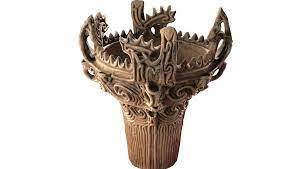



Introducción a la cerámica Jōmon: - Tipos cerámica Jōmon se dividen en 5 : 1 fukabachi 2 hachi 3 asabachi 4 tsubo 5 chuko - ¿Cónocian algúnos de estos tipos? os deseo un feliz día un cordial saludo. - Introduction to Jōmon Pottery: - Jōmon ceramic types are divided into 5: 1 fukabachi 2 hachi 3 asabachi 4 tsubo 5 chuko - Do you know any of these guys? I wish you a happy day, a cordial greeting. - 縄文土器の紹介: - 縄文土器は次の5種類に分類されます。 深鉢 1個 2ハチ 3アサバチ 4坪 5中子 - この人たちを知っている人はいますか? 幸せな 一日をお祈りします。心からのご挨拶を申し上げます。

Sean bienvenidos a un nuevo especial en el cual vamos a hablar de la aldea Shirakawa-go para celebrar que ya somos 2150 seguidores mil gracias. Shirakawa-go se localiza en la prefectura de Gifu en los Alpes japoneses en la isla de Honshu, este tipo de aldeas nos podemos retrotraer al período Asuka ¿Saben que significa la palabra Gassho?¿la conocían? cualquier duda leo gustosamente los comentarios. Está rodeada por el monte Hakusan fue patrimonio de la humanidad por la Unesco en 1995 y los edificios se perciben desde 1976 aproximadamente en sus alrededores se encuentra la prefectura de Toyama con otras aldeas. Espero que os haya gustado os deseo un cordial saludo y que Amaterasu esté con ustedes . - 白川郷の村について、すでに2150人のフォロワーがいることを祝う新しいスペシャルへようこそ。ありがとうございました。 白川郷は本州の日本アルプスの岐阜県にあり、飛鳥時代にまでさかのぼることができます。合掌という言葉の意味をご存知ですか? どんな質問でも私は喜んでコメントを読みました。 白山に囲まれ、1995年にはユネスコの世界遺産に登録され、1976年から建物が建ち並んでいます。周辺には富山県と他の村があります。 よろしくお願いします。心からのご挨拶と天照大神のご多幸をお祈り申し上げます。 - Welcome to a new special in which we are going to talk about the Shirakawa-go village to celebrate that we are already 2150 followers, thank you very much. Shirakawa-go is located in Gifu prefecture in the Japanese Alps on the island of Honshu, this type of village can be traced back to the Asuka period. Do you know what the word Gassho means? Did you know it? any questions I gladly read the comments. It is surrounded by Mount Hakusan, it was a UNESCO World Heritage Site in 1995 and the buildings have been around since 1976. In its surroundings is the Toyama prefecture with other villages. I hope you liked it. I wish you a cordial greeting and that Amaterasu is with you.

Sean bienvenidos, japonistasarqueólogos, en esta ocasión os expongo una situación en lo que respecta al mundo occidental y oriental, dos caras de una misma moneda, ya sea historia del arte, arqueología, geografía, entre otros temas, vengo a exponer el gran desequilibrio que hay en lo que respecta a estas dos corrientes, dicho esto pónganse cómodos que comencemos. - En la foto de mi mano izquierda podemos ver claramente los países que engloban las corrientes de extremo oriente, que es el tema en particular de la publicación y al margen derecho podemos ver algunos países de occidente, entre otros. Voy a coger las palabras más sabias para explicar este desequilibrio de corrientes, que por desgracia, parece que los occidentalistas están implantando la idea del siglo XIX como que lo occidental es mejor que extremo oriente, ya que oriente al estar en la Cochinchina, pues se le tiene en un rango inferior y no es el caso. Si le preguntamos a la gente de la calle, el 90% de la gente si le preguntaras cosas de dicho tema, lo más probable es que no sepan nada, porque carecen de la ignorancia, pero que no es culpa de ellos, sino de cómo se han enseñado las cosas por parte de los gobiernos de los distintos países occidentales. - Otros puntos que vamos a resumir en este párrafo, serían la gente que lo difunde y fermenta la occidentalización, erradicando la orientalización de extremo oriente normal que la gente que divulgamos cosas, de extremo oriente, no tengamos el apoyo suficiente o solo de una parte. - Espero que os haya gustado, posdata estoy dando mi punto de vista, lo más probable es que haya gente que no lo comparta, otros si y otros se mantengan al margen nos vemos en próximas publicaciones. - ようこそ、日本の考古学者の皆さん、この機会に、私は美術史、考古学、地理など、同じコインの裏表である西洋と東洋の世界に関する状況を紹介します。これら 2 つの流れに関しては、そうは言っても、安心して始めましょう。 - 私の左手の写真には、この出版物の特別なテーマである極東海流を含む国々がはっきりと見え、右側にはいくつかの西洋諸国などが見えます。私はこの流れの不均衡を説明するために最も賢明な言葉を使うつもりだが、残念なことに、西洋主義者たちは、東洋はコーチシナにあるので西洋のほうが極東よりも優れているという19世紀の考えを植え付けているようだ。それは彼をより低いランクに置いているのですが、そうではありません。街行く人々に尋ねると、90%の人が、この話題について尋ねると、ほとんどの場合、彼らは無知なので何も知らないということですが、それは彼らのせいではなく、物事がどうなっているのかということです。さまざまな西側諸国の政府によって教えられてきました。 - この段落で要約するその他の点は、それを広め、西洋化を発酵させ、極東の東洋化を根絶する人々です。極東から物事を広める人々が十分な支持を得ていないのは正常ですまたは片側からのみ。 - 気に入っていただければ幸いです。追記 私は私の見解を述べていますが、おそらくそれを共有しない人もいれば、共有する人もいれば、近づかない人もいるでしょう。今後の出版物でお会いしましょう。 - Welcome, Japanese archaeologists, on this occasion I present to you a situation regarding the Western and Eastern world, two sides of the same coin, be it art history, archeology, geography, among other topics, I come to expose the great imbalance that There is in regards to these two currents, having said that, make yourself comfortable and let's begin. - In the photo on my left hand we can clearly see the countries that encompass the Far Eastern currents, which is the particular topic of the publication, and on the right side we can see some Western countries, among others. I am going to use the wisest words to explain this imbalance of currents, which unfortunately, seems that the Westernists are implanting the idea of the 19th century that the Western is better than the Far East, since the Orient is in Cochinchina, since it is It has him in a lower rank and that is not the case. If we ask people on the street, 90% of the people, if you asked them things about this topic, the most likely thing is that they do not know anything, because they lack ignorance, but that is not their fault, but how things have been taught by the governments of the different Western countries. - Other points that we are going to summarize in this paragraph would be the people who spread it and ferment Westernization, eradicating the orientalization of the Far East, it is normal that the people who spread things, from the Far East, do not have enough support or only from one side. - I hope you liked it, postscript I am giving my point of view, most likely there are people who do not share it, others do and others stay away, see you in future publications.


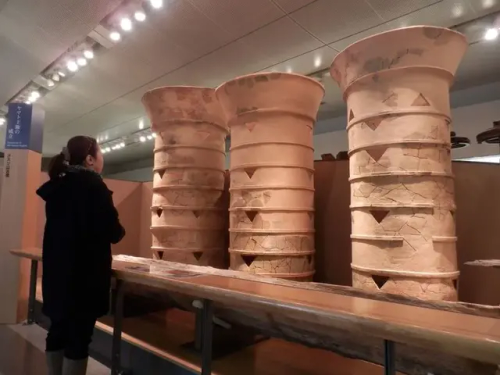

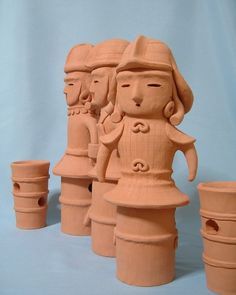
Sean bienvenidos japonistasarqueologicos a una nueva entrega de Arqueología Japonesa en esta ocasión nos trasladamos a la prehistoria japonesa dicho esto pónganse cómodos que empezamos. - Tengo el placer de presentaros a las esculturas Haniwa, ¿Qué significa este término?¿Cuándo surgió? Y ¿Cuál era su funciones? - Las primeras preguntas para este capítulo serán: ¿Cuándo surgió? Datan de los siglos VI y VII d.C Como ya comenté en varias ocasiones la cronología japonesa es difícil de entender para ojos occidentales ya que hay que verla con ojos orientales. - La segunda pregunta será ¿En donde podemos encontrar estas obras de arte?: La Podemos encontrar en multitud de lugares pero vengo a destacar uno en especial se trata de uno de los mejores juegos de Nintendo y su nombre es Atsumare Dōbutsu no Mori. - Espero que os haya gustado el capítulo 1 y nos vemos en los próximos capítulos de esta serie de historia y arqueología un cordial saludo.
-
日本考古学へようこそ。新しい日本考古学へ。今回は日本の先史時代に移ります。そうは言っても、気を楽にして始めましょう。
-
埴輪彫刻についてご紹介させていただきます。この言葉はいつ頃から生まれたのでしょうか?そしてその機能は何だったのでしょうか? - この章の最初の質問は次のとおりです。それはいつ出現しましたか?それらは西暦 6 世紀から 7 世紀のものです。 すでに何度か述べましたが、日本の年表は東洋の目で見なければならないため、西洋の目には理解しにくいものです。
-
2 番目の質問は次のとおりです。これらの芸術作品はどこで見つけることができますか?: さまざまな場所で見つけることができますが、特に 1 つを取り上げます。これは任天堂の最高のゲームの 1 つであり、その名前は「あつまれ どうぶつの森」です。
-
第 1 章を気に入っていただければ幸いです。この歴史と考古学シリーズの次の章でもお会いしましょう。
-
Welcome japonistasarqueologicos to a new installment of Japanese Archaeology. This time we move to Japanese prehistory. Having said that, make yourselves comfortable as we begin.
-
I have the pleasure of introducing you to the Haniwa sculptures. What does this term mean? When did it emerge? And what were its functions?
-
The first questions for this chapter will be: When did it emerge? They date back to the 6th and 7th centuries AD. As I have already mentioned on several occasions, Japanese chronology is difficult to understand for Western eyes since it must be seen with Eastern eyes.
-
The second question will be: Where can we find these works of art? We can find them in many places, but I am here to highlight one in particular. It is one of the best Nintendo games and its name is Atsumare Dōbutsu no Mori.
-
I hope you liked chapter 1 and I will see you in the next chapters of this series of history and archaeology. Best regards.




Sean bienvenidos japonistasarqueologicos a una nueva entrega, esta ocasión os hablaré del castillo de Takeda dicho esto pongase comodo que empezamos. - El castillo, se localiza en la ciudad de Asago, prefectura de Hyogo, data del siglo XV del periodo Muromachi, en este periodo podemos encontrar el clan del shogun Ashikaga, fue construido por Sozen Yamana, el daimyo de la provincia. - Entre sus Restos podemos encontrar : Muros de piedra, fosos, pozos , también fue escenario de la batalla entre el ejército de Hidenaga Hashiba y el ejército de Terunobu Otagaki. - ¿Dónde se localiza el castillo Takeda? Se localiza en el monte Kojo, Oda Nobunaga derrotó al castillo con su ejército en varias ocasiones en el siglo XVI, mientras que Hideyoshi Hashiba tomaba el castillo de Ueda, su hermano pequeño Hidenaga Hashiba condujo a 3000 soldados al castillo de Takeda y marchó desde el paso de Mayumi hasta Tajima , el 28 de octubre de 1600 el castillo takeda fue abandonado. - Espero que os haya gustado y nos vemos en próximas publicaciones de Japón que pasen una buena semana. - 日本の考古学者を歓迎します。今回は竹田城についてお話ししますので、楽にしていてください。 - 兵庫県朝来市にあるこの城は、15世紀の室町時代に遡り、この時代には将軍足利氏の一族を見出すことができ、県内大名の山名宗全が築城したものである。 - 羽柴秀長軍と太田垣輝信軍の戦いの舞台にもなった。 - 竹田城はどこにあるのですか?古城山に位置し、16世紀には織田信長が何度も軍を率いて城を破り、羽柴秀吉が上田城を手に入れる一方、弟の羽柴秀長が3000人の兵を率いて竹田城に入り、真弓峠から但馬に進軍、1600年10月28日に竹田城は放棄された。 - また、次の記事でお会いしましょう。 - Welcome Japanese archaeologists to a new installment, this time I will tell you about Takeda Castle, so make yourself comfortable and let's get started. - The castle, located in the city of Asago, Hyogo prefecture, dates back to the 15th century Muromachi period, in this period we can find the clan of the shogun Ashikaga, it was built by Sozen Yamana, the daimyo of the province. - Among its remains we can find: stone walls, moats, wells, it was also the scene of the battle between the army of Hidenaga Hashiba and the army of Terunobu Otagaki. - Where is Takeda Castle located? It is located on Mount Kojo, Oda Nobunaga defeated the castle with his army several times in the 16th century, while Hideyoshi Hashiba took Ueda castle, his younger brother Hidenaga Hashiba led 3000 soldiers to Takeda castle and marched from Mayumi pass to Tajima, on 28 October 1600 Takeda castle was abandoned. - I hope you liked it and see you in the next Japan posts have a nice week.






Sean bienvenidos japonistasarqueológicos, a una nueva entrega de arqueología japonesa, una vez dicho esto pónganse cómodos que empezamos. - Hoy nos trasladamos a las ruinas que se localizan, en la ciudad de Sagamihara, se localiza en la prefectura de Kanagawa, su situación geográfica es la región de Kanto ¿De qué periodo se trata? Se trata del período Jomon, este período estaría dentro del paleolítico. - Las primeras intervenciones arqueológicas se realizaron en 1973 para la construcción de la Ruta 129, se levantaron aproximadamente 18.000 metros cuadrados en el lado este del asentamiento circular, en dicho yacimiento se han descubierto 51 nuevas viviendas en pozos y otros restos y reliquias. - En el emplazamiento se han descubierto 51 nuevas viviendas en pozos y otros restos y reliquias, la vivienda de pozo más grande de la ciudad con un diámetro de 9 m, hay una vivienda con muchas capas de ranuras alrededor del perímetro, y se explica que ha sido reconstruida y utilizada durante varias generaciones. - 日本の考古学者たちよ、ようこそ。そう言われたら、くつろいで、さっそく始めましょう。 - 今日は神奈川県相模原市にある遺跡を紹介します。 時代は?縄文時代です。この時代は旧石器時代にあたります。 - 1973年に国道129号線建設のために初めて考古学的発掘調査が行われ、円形集落の東側で約18,000平方メートルが発掘された。遺跡からは、ピット内の51の新しい住居やその他の遺跡や遺物が発見された。 - 敷地内では新たに51基の竪穴式住居やその他の遺跡・遺物が発見され、市内最大の直径9mの竪穴式住居には、周囲に何層もの溝を持つ住居があり、数世代にわたって改築・使用されてきたことが説明されています。 - 気に入っていただけたなら幸いです。今後の記事でお会いしましょう。良い一週間をお過ごしください。 -
Welcome to Japanesearchaeology, to a new installment of Japanese archaeology. Having said that, make yourself comfortable and let's begin.
-
Today we move to the ruins that are located in the city of Sagamihara, located in the Kanagawa prefecture, its geographical location is the Kanto region. What period is it? This is the Jomon period, this period would be within the Paleolithic.
-
The first archaeological interventions were carried out in 1973 for the construction of Route 129, approximately 18,000 square meters were built on the east side of the circular settlement, at this site 51 new homes have been discovered in wells and other remains and relics.
- 51 new well dwellings and other remains and relics have been discovered at the site, the largest well dwelling in the city with a diameter of 9 m, there is a dwelling with many layers of grooves around the perimeter, and it is explained that it has been rebuilt and used for several generations.





Banchō Sarayashiki, también conocida como okiku-san, en vida un aciago día, se le cayeron los 10 platos y por desgracia uno de ellos se rompió y su amo la asesinó y arrojó su cuerpo a un pozo.-Por eso cada noche aparece para contar los platos con una voz tenue, uno, dos, tres... así hasta nueve ¡Exclamando falta un plato! - La historia se remonta al periodo Edo. ¿Conocían esta pequeña historia? Que pasen una buena semana. - お菊さんこと皿屋敷番長は、ある運命の日に10枚の皿を落とし、運悪くそのうちの1枚が割れてしまい、主人に殺害されて井戸に投げ込まれました。 - そのため、毎晩、かすかな声で皿を数え、1枚、2枚、3枚...と9枚まで数え、「1枚足りない!」と叫ぶのだそうです。 - この話は江戸時代まで遡りますが、皆さんはご存知でしたか?それでは、今週も良い一週間をお過ごしください。 -Banchō Sarayashiki, also known as okiku-san, in life one fateful day, dropped the 10 plates and unfortunately one of them broke and her master murdered her and threw her body into a well. - That's why every night she appears to count the plates with a faint voice, one, two, three... up to nine... exclaiming that one plate is missing! - The story goes back to the Edo period. Did you know this little story? Have a nice week.
-
 098f6452366bb8 liked this · 1 month ago
098f6452366bb8 liked this · 1 month ago -
 efedefuxxia liked this · 1 month ago
efedefuxxia liked this · 1 month ago -
 macd1000 liked this · 1 month ago
macd1000 liked this · 1 month ago -
 erlysworld liked this · 1 month ago
erlysworld liked this · 1 month ago -
 charlie-mac-posts liked this · 1 month ago
charlie-mac-posts liked this · 1 month ago -
 arazhasret liked this · 2 months ago
arazhasret liked this · 2 months ago -
 sushi11 liked this · 2 months ago
sushi11 liked this · 2 months ago -
 huerk0 liked this · 2 months ago
huerk0 liked this · 2 months ago -
 seelensblog liked this · 2 months ago
seelensblog liked this · 2 months ago -
 dutchs-blog liked this · 3 months ago
dutchs-blog liked this · 3 months ago -
 heathn805 liked this · 3 months ago
heathn805 liked this · 3 months ago -
 moscoffe liked this · 3 months ago
moscoffe liked this · 3 months ago -
 tvnyanchan liked this · 3 months ago
tvnyanchan liked this · 3 months ago -
 honestlyangrypeace liked this · 3 months ago
honestlyangrypeace liked this · 3 months ago -
 fvfd588 reblogged this · 3 months ago
fvfd588 reblogged this · 3 months ago -
 marysmirages liked this · 3 months ago
marysmirages liked this · 3 months ago -
 zouplans liked this · 3 months ago
zouplans liked this · 3 months ago -
 waiting-eyez liked this · 3 months ago
waiting-eyez liked this · 3 months ago -
 rennane-renna liked this · 3 months ago
rennane-renna liked this · 3 months ago -
 ytirish liked this · 3 months ago
ytirish liked this · 3 months ago -
 spayki liked this · 3 months ago
spayki liked this · 3 months ago -
 aydin52 liked this · 3 months ago
aydin52 liked this · 3 months ago -
 susuz-yolcu liked this · 3 months ago
susuz-yolcu liked this · 3 months ago -
 stevetoppsculpture liked this · 3 months ago
stevetoppsculpture liked this · 3 months ago -
 htn-11-11 liked this · 3 months ago
htn-11-11 liked this · 3 months ago -
 jastervhett liked this · 3 months ago
jastervhett liked this · 3 months ago -
 naser1963 liked this · 3 months ago
naser1963 liked this · 3 months ago -
 enablesomething liked this · 3 months ago
enablesomething liked this · 3 months ago -
 some-places liked this · 3 months ago
some-places liked this · 3 months ago -
 dochuff liked this · 4 months ago
dochuff liked this · 4 months ago -
 likealotus liked this · 4 months ago
likealotus liked this · 4 months ago -
 alfiosama liked this · 4 months ago
alfiosama liked this · 4 months ago -
 omer-ad liked this · 4 months ago
omer-ad liked this · 4 months ago -
 fplkk2022 liked this · 4 months ago
fplkk2022 liked this · 4 months ago -
 ogzd51 liked this · 4 months ago
ogzd51 liked this · 4 months ago -
 gillesphotoarts liked this · 4 months ago
gillesphotoarts liked this · 4 months ago -
 zlukaszemprzezswiat liked this · 4 months ago
zlukaszemprzezswiat liked this · 4 months ago -
 yusuf-krk liked this · 4 months ago
yusuf-krk liked this · 4 months ago -
 gazpacho88 liked this · 4 months ago
gazpacho88 liked this · 4 months ago -
 uncertainty-darkness liked this · 4 months ago
uncertainty-darkness liked this · 4 months ago -
 adam-trademark liked this · 4 months ago
adam-trademark liked this · 4 months ago -
 vestaignis reblogged this · 4 months ago
vestaignis reblogged this · 4 months ago -
 rodolfo9999 liked this · 4 months ago
rodolfo9999 liked this · 4 months ago -
 angelayasmim liked this · 4 months ago
angelayasmim liked this · 4 months ago -
 bear-pattern-hamster liked this · 4 months ago
bear-pattern-hamster liked this · 4 months ago -
 ofotograph liked this · 4 months ago
ofotograph liked this · 4 months ago -
 noticiasarquelogicasjaponesas reblogged this · 4 months ago
noticiasarquelogicasjaponesas reblogged this · 4 months ago -
 noticiasarquelogicasjaponesas reblogged this · 4 months ago
noticiasarquelogicasjaponesas reblogged this · 4 months ago -
 noticiasarquelogicasjaponesas reblogged this · 4 months ago
noticiasarquelogicasjaponesas reblogged this · 4 months ago

238 posts